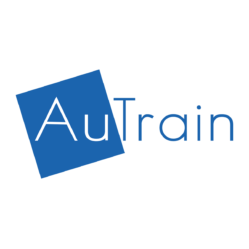11:30 – 12:00
Wrap up
Activity: Real-world application 3.1
References & Resources
Questions? Goodbye & thanks
#9. Wrap up the session by summarizing the main points of it and monitoring participants learning
Note: Present slide number 45
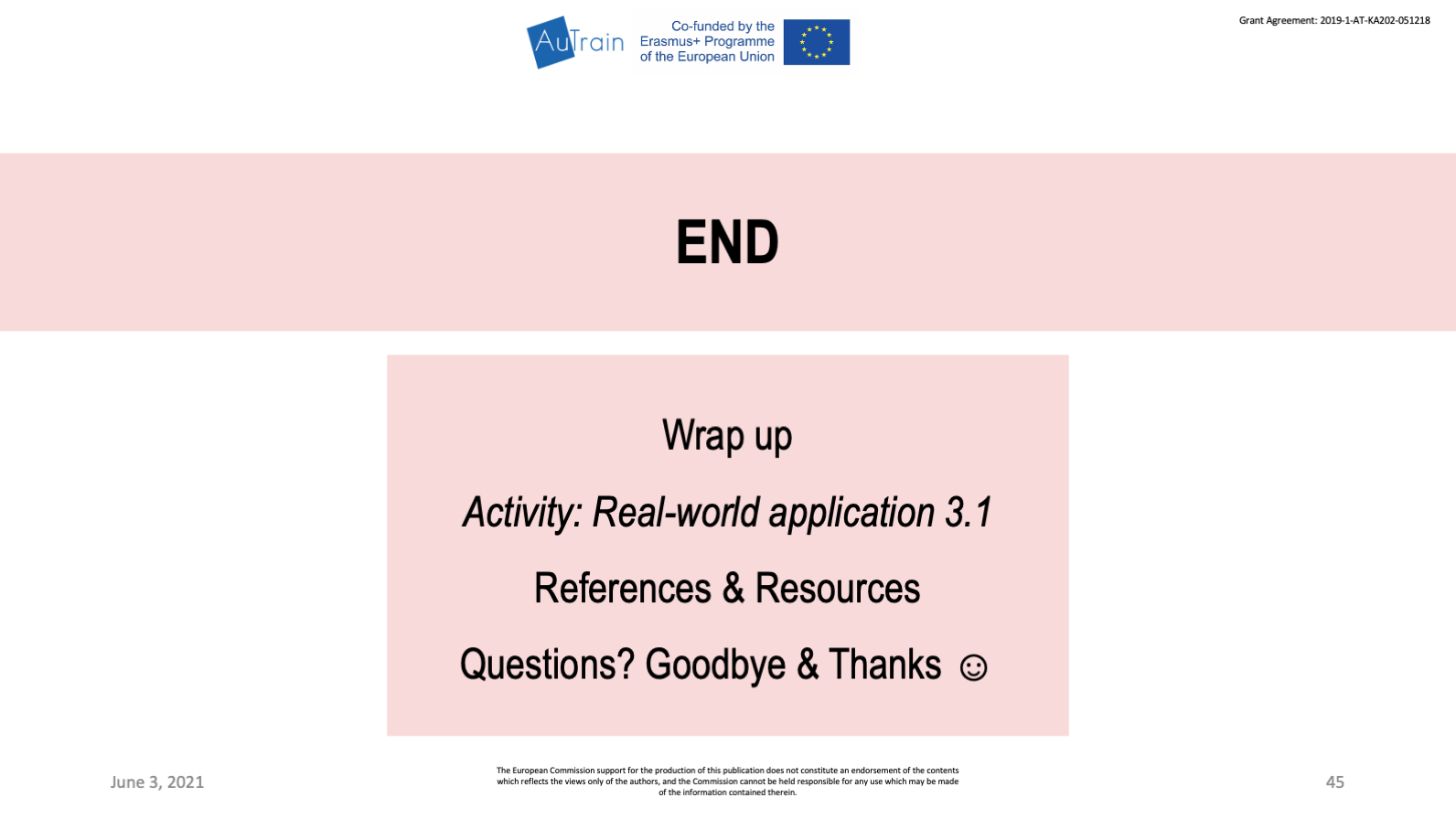
#10. Activity: Real-world application 3.1
Note: Present slide number 46
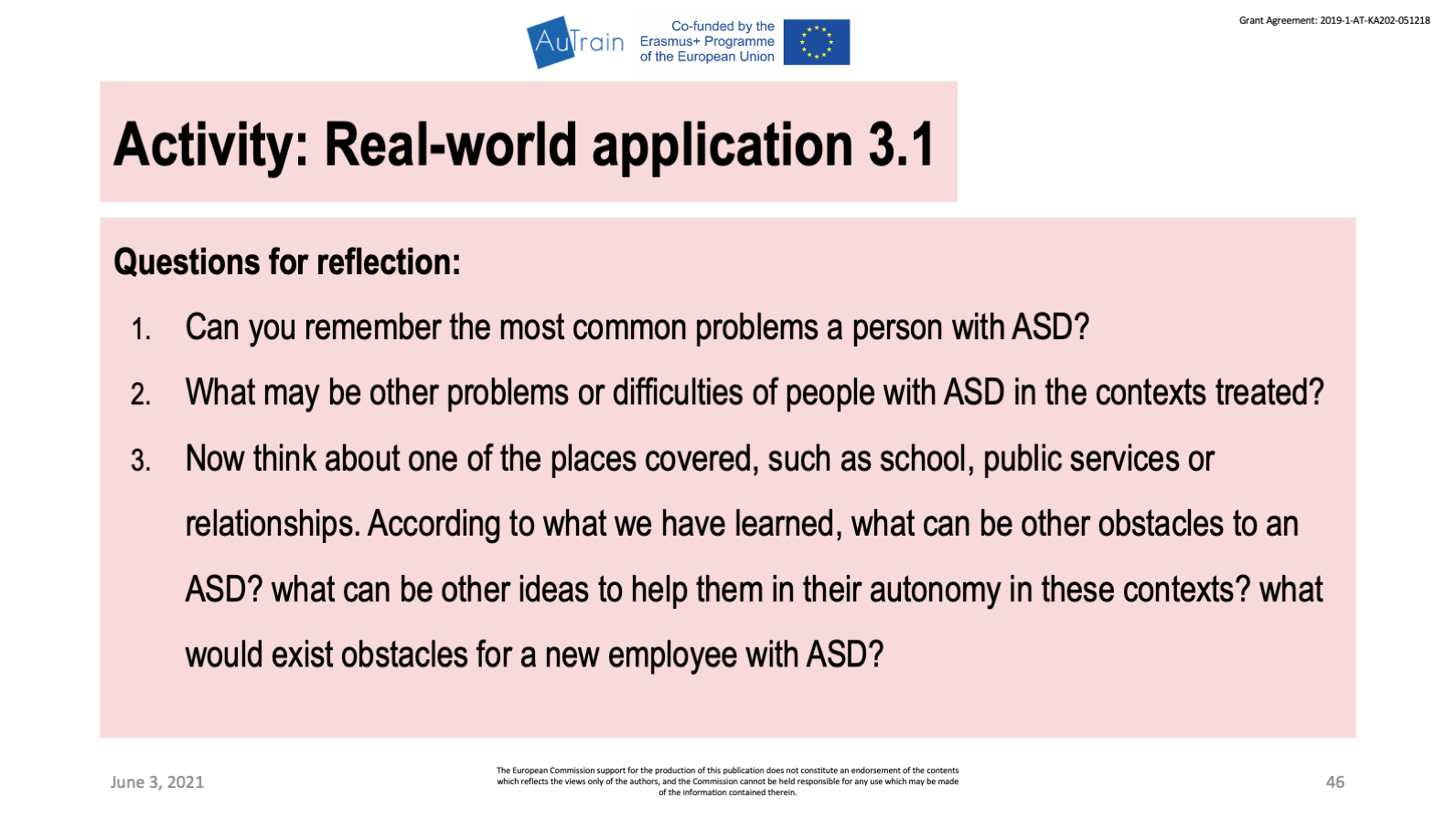
Introduce the aim of the activity
At home participants will write a reflective essay, to show what they are learning about the topic of the module as well as showing how you they develop critical and reflective skills. These reflections should be turned in and will be discussed later on.
Introduce the material: Pass out the Worksheet Real-world application 3.1.
Read out load the questions for reflection:
a. Can you remember the most common problems a person with ASD?
b. What may be other problems or difficulties of people with ASD in the contexts treated?
c. Now think about one of the places covered, such as school, public services or relationships. According to what we have learned, what can be other obstacles to an ASD? what can be other ideas to help them in their autonomy in these contexts? what would exist obstacles for a new employee with ASD?
Ask for questions about the reflection.
#11. Introduce References & Resources, and indicate where participants can find it in the Autrain platform
Note: Present slide number 47
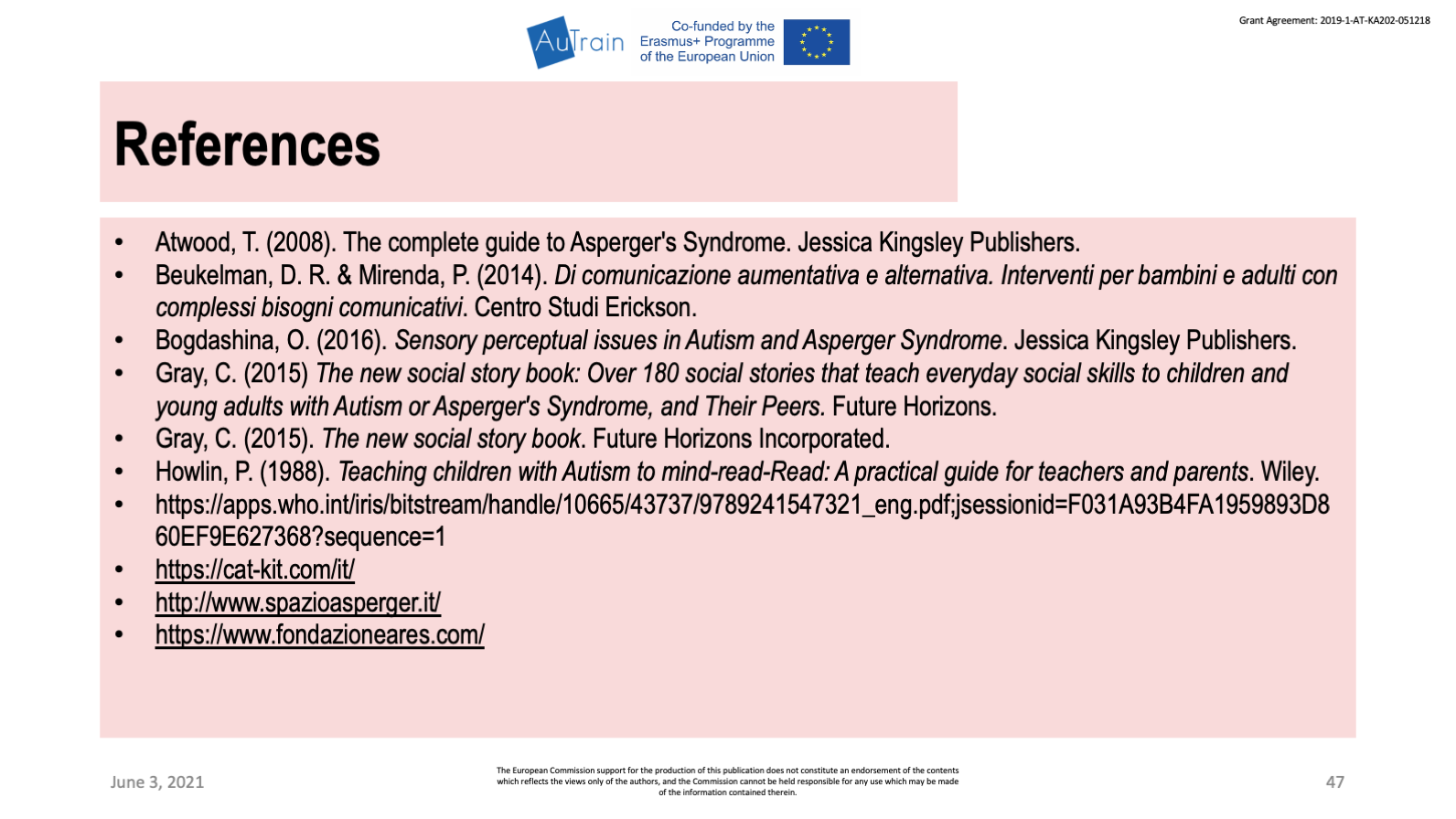
References
- Atwood, T. (2008). The complete guide to Asperger’s Syndrome. Jessica Kingsley Publishers.
- Beukelman, D. R. & Mirenda, P. (2014). Di comunicazione aumentativa e alternativa. Interventi per bambini e adulti con complessi bisogni comunicativi. Centro Studi Erickson.
- Bogdashina, O. (2016). Sensory perceptual issues in Autism and Asperger Syndrome. Jessica Kingsley Publishers.
- Gray, C. (2015) The new social story book: Over 180 social stories that teach everyday social skills to children and young adults with Autism or Asperger’s Syndrome, and Their Peers. Future Horizons.
- Gray, C. (2015). The new social story book. Future Horizons Incorporated.
- Howlin, P. (1988). Teaching children with Autism to mind-read-Read: A practical guide for teachers and parents. Wiley.
- https://apps.who.int/iris/bitstream/handle/10665/43737/9789241547321_eng.pdf;jsessionid=F031A93B4FA1959893D860EF9E627368?sequence=1
- https://cat-kit.com/it/
- http://www.spazioasperger.it/
- https://www.fondazioneares.com/
#12. Questions? Goodbye & Thanks for coming
Note: Present slides number 48 and 49
Ask for any question participants may have. As you intentionally say goodbye, give participants a sense of purpose through making meaning of their hardships and accomplishments within the module. Empower them by reminding them of the skills and strengths they possess now about inclusion and friendly language.
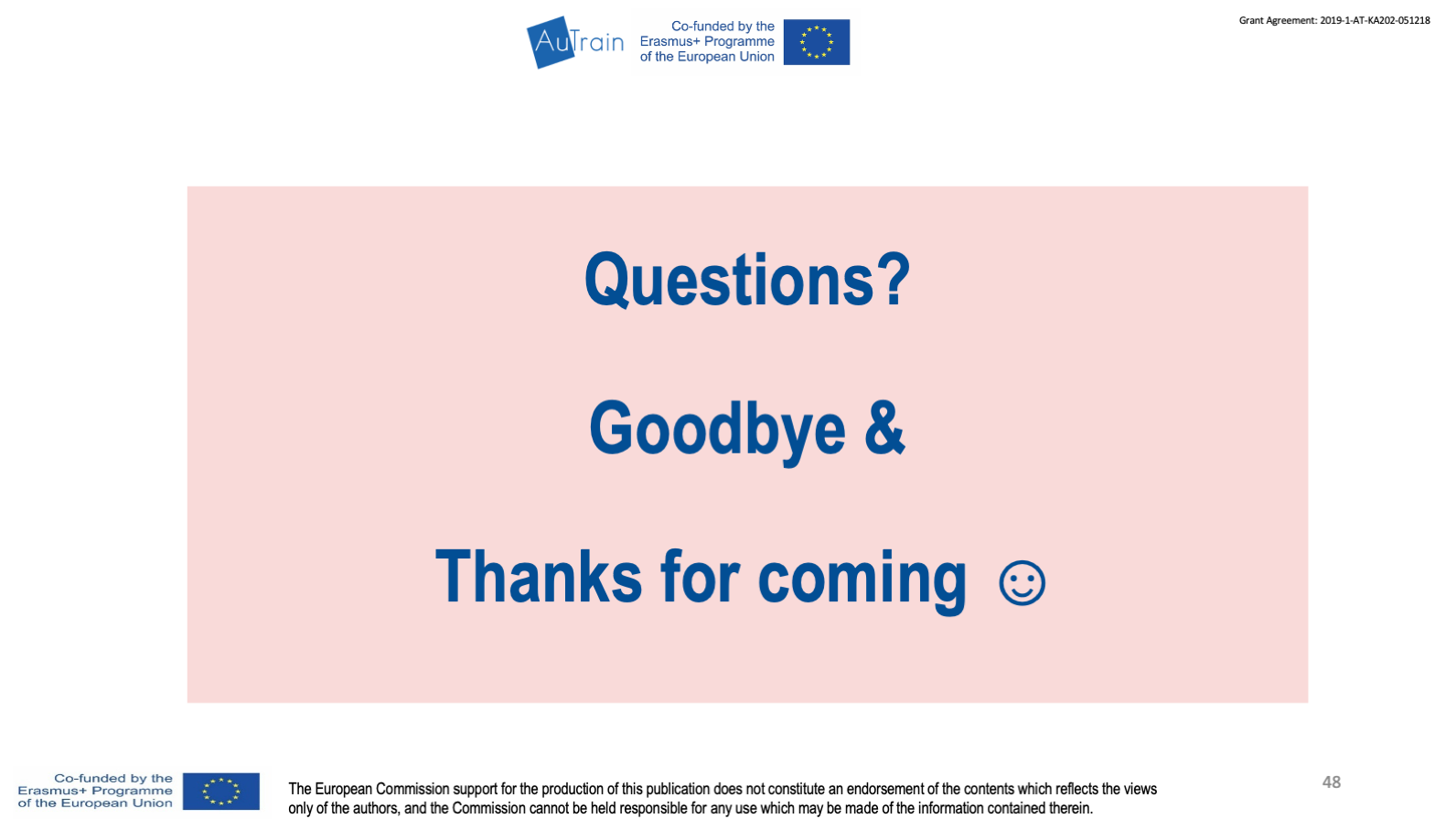
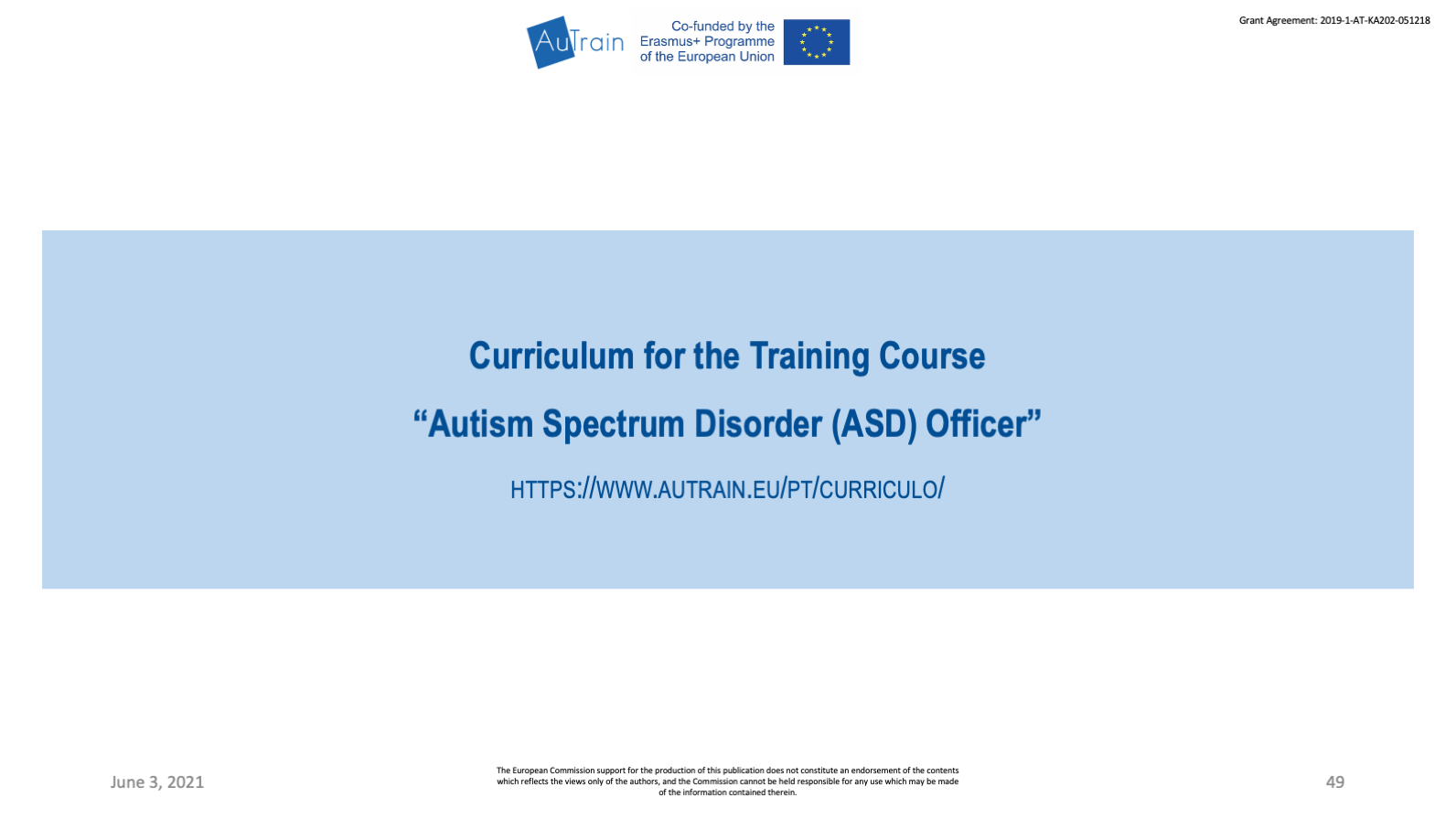
End of the module
Reflection
In the end of the module write a reflection on what occurred during the process. Concerning the participants’ learning, the activities, the organization, etc.
